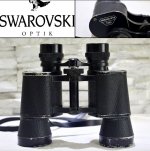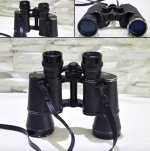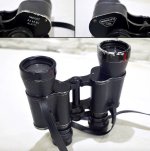Quote:
Originally Posted by ceasar View Post
One of the reasons is probably because Porros have to move heavier long tubes along with the oculars to gain focus whereas in Roof prisms usually only a focusing lens is moved. Although the old Swaro 8x30 SLC moved its objective lenses to gain focus.
Not quite. The Zeiss Classic binoculars (8x30, 10x40) also had moving objective lenses.
Actually, I think there are several reasons why porros with external focusing, i.e. moving eyepieces, have a stiffer focuser than binoculars with internal focusing. Perhaps the most obvious one is that most users press the eyepieces against the eyes, this means that bincoluars with eyepieces focusing must be built in a way to prevent the eyepieces from moving out of focus. Another reason is that manufacturers never saw the need to change the focusers of their porros - after all, they all work perfectly well over the limited range a porro can be focused.
And with the Habicht it's pretty clear that their focusing is so stiff because of the seals that prevent moisture from entering the binocular.
Hermann
Hermann does make an interesting point in the previous thread above.
Originally Posted by ceasar View Post
One of the reasons is probably because Porros have to move heavier long tubes along with the oculars to gain focus whereas in Roof prisms usually only a focusing lens is moved. Although the old Swaro 8x30 SLC moved its objective lenses to gain focus.
Not quite. The Zeiss Classic binoculars (8x30, 10x40) also had moving objective lenses.
Actually, I think there are several reasons why porros with external focusing, i.e. moving eyepieces, have a stiffer focuser than binoculars with internal focusing. Perhaps the most obvious one is that most users press the eyepieces against the eyes, this means that bincoluars with eyepieces focusing must be built in a way to prevent the eyepieces from moving out of focus. Another reason is that manufacturers never saw the need to change the focusers of their porros - after all, they all work perfectly well over the limited range a porro can be focused.
And with the Habicht it's pretty clear that their focusing is so stiff because of the seals that prevent moisture from entering the binocular.
Hermann
Hermann does make an interesting point in the previous thread above.










